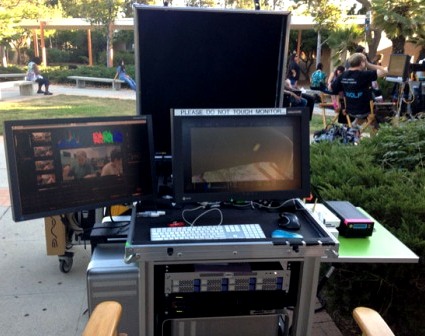How To Be a DIT – Part 3
I’ve blogged a few times about how to become a DIT or a Digital Imaging Technician, bringing together the best things I can find from the internet to help those who are interested in this emerging role learn as much as possible. Check out the DIT category.
A DIT is a person who is competent in data management, look creation, and giving knowledgable advice to the DP on ways to get the best image possible. – Red User Thread.

Michael Cioni, CEO of Light Iron Digital, a LA/NY company that provides DIT carts, workflow management and final colour grading, recently posted a long response to a RED User thread about what tools and equipment a DIT should be using.
The truth is getting out and there are creatives who are experiencing life without a post house thanks to the talent of good DIT’s. By this, a new standard is being born and I have watched it explode over the past 3 years – which is why this is all worth debating. But one things is for sure, 3 years ago on-set dailies was but a fraction of a fraction of services on set. Today, it’s 100% of my dailies business and growing with companies all over the world. If you think the DIT as a post provider is a phase that will phase itself out, then you are already less valuable than your employers think…but they’ll figure it out soon. They always do.
It’s definitely worth reading the whole post – especially if you’re interested in using one of LightIron’s Outpost or Lilypad systems and Michael lists some of the expectations that a DIT cart is expected to fulfil on set.
Free On-Set Colour Correction Webinar
In this free webinar from Assimilate, Juan Carlos Ortiz-Duran – colorist & DIT, talks through using Pomfort LiveGrade and Scratch LAB to perform on-set colour correction and host Michael Forrest also introduces color theory fundamentals and how to read and utilise scopes correctly.
Understanding LUTS
Igor Ridanovic from HDhead provides a quick over viewing of understanding some of the technicalities of understanding color spaces and LUTS in this tutorial which is focused on Avid DS but the info is the same for any system.




